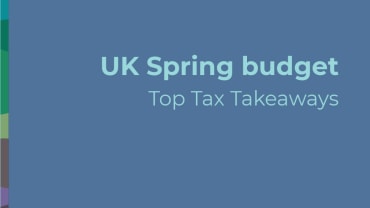The 2018 Scottish Budget has introduced a number of key changes that will affect individuals and businesses.
Here are our top takeaways from the budget today:
1. There are to be no changes to income tax rates - so the five rate bands introduced in 2018-19 remain as the structure. The starter (19%) band will run for £2,049 above the (UK) personal allowance of £12,500. Scottish basic (20%) and intermediate (21%) rate thresholds will be increased by inflation from April 2019 but higher and top rate thresholds will be frozen.
2. The Scottish Government is not replicating the increase in the higher rate threshold to £50,000 announced for the rest of the UK. This means that there would be a marginal rate of tax and NI totaling 53% on the slice of earned income between £43,430 and £50,000 , as compared to 32% in the rest of the UK.
3. Those on an MSP's salary (some £62,000) will pay approximately £30 a week more than those on equivalent salaries elsewhere in the UK; but that those on a £25,000 salary will pay about £20 less a year than their counterparts in the rest of the UK.
4. On Land and Buildings Transaction Tax, the Additional Dwelling Supplement (ADS - mainly on 2nd homes and buy-to-let properties) is to increase from 3% to 4% from 25 January 2019. The ADS increase was not expected _ but perhaps this is the Scottish government's response to the 1% SDLT surcharge proposed for purchases of residential property by non-residents. Everyone will be treated as a non-resident for Scottish ADS purposes.
5. From 25 January 2019 the lower rate of non-residential LBTT will be reduced from 3% to 1%, the upper rate will be increased from 4.5% to 5%, and the starting threshold of the upper rate will be reduced so that it applies from above £250,000 instead of £350,000. This is claimed to make Scotland the most "competitive" part of the UK for non-residential land transaction taxes.
6. There was an announcement that there would be new reliefs, this time replicating the rest of the UK, in relation to "seeding" (the initial transfer) of properties into entities known as Property Authorised Investment Funds and Co-owned Authorised Contractual Schemes. There will also be a relief when units in CoACS are exchanged. There is to be further consultation on these and no timescale is given.
7. There is no change to the position on Aggregates Levy and Air Departure Tax (Air Passenger Duty in the rest of the UK). While these are to join the ranks of devolved taxes, various difficulties over State Aid (in relation to ADT with particular reference to the Highlands and Islands) mean that their introduction is delayed. There remains a stated commitment to reduce the impact of ADT by 50% and abolish it entirely "when resources allow".
8. Scottish Landfill Tax rates are increasing with inflation to a standard rate of £91.35 per tonne in 2019-20, a lower rate for less polluting materials (referred to as qualifying material) of £2.90 per tonne in 2019-20.There is a warning that because of decreasing use of landfill, overall receipts from the tax are expected to decline.
9. On business rates, the non-domestic rates poundage will increase by less than inflation, so it will be the lowest in the UK. The overall impact of this, various targeted reliefs and the recent revaluation process is likely to be of particular (relative) benefit to smaller and medium sized businesses.
10. The process for assigning half of VAT on expenditure in Scotland to the Scottish Government will continue to develop, as the model for what is essentially a block adjustment is tested and adjusted. This will have no effect on VAT rates and rules in Scotland, but once fully in effect, targeted at 2020-21, this will have quite a significant effect on the overall Scottish Budget.
Contributors
Director of Corporate Tax
Partner












